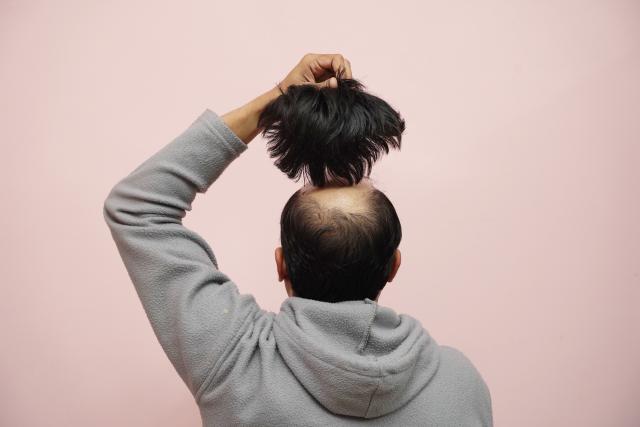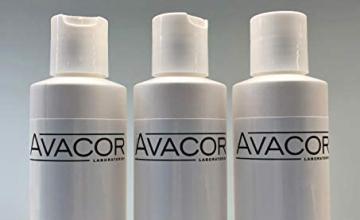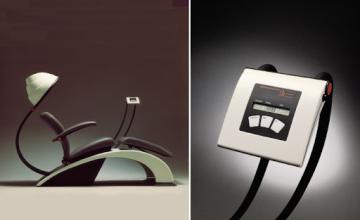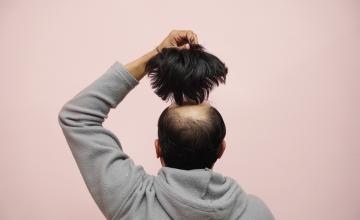Hair Replacement systems, also known as hairpieces, hair replacements, hair systems or toupees, have improved over the past decade. Quality hair replacement systems are now refined in construction and light weight. For those with extensive baldness who require a full head of hair to be satisfied they offer a quick and nearly instant solution.
Hair systems are constructed of human hair or synthetic fiber. Recent advances have made the synthetic hair much more natural in appearance and texture.
A quality hair replacement system is specially constructed for an individual recipient. These systems are made of real hair, synthetic, or both. They're designed to attach to the head for an extended period ranging from 3-6 weeks, without ever being taken off. Visit Farrell Hair Systems for more information.
Hair systems can work for both men and women. In fact, more and more women are opting for hair systems over wigs, as they can be more comfortable and look more natural.
The process of getting a Hair Replacement System
Typically clients first visit a hair salon for an evaluation. The extent of their hair loss is measured. They are given information including prices, maintenance, and future schedules. Usually, it takes several days for the system to be prepared, based on the client’s preferences.
While a person can get virtually any type of look, you are generally guided towards an option that looks more undetectable and realistic. These studios employ their own hair stylists to achieve ideal looks. Clients can visit these stylists for monthly haircuts or touch-ups.

With these hair systems, a fine mesh foundation is placed on the scalp's balding area and precisely cut to these dimensions. Later, real or synthetic hairs will be inserted into a foundation to create the "Hair System" or hair piece.
The foundations of the past were actually designed to be thicker and more durable. Fortunately, today's foundations are much thinner to make them undetectable. However, this thinness comes at a price, literally. The thinner a system the more delicate it will be and thus it will require being replaced more often.
Once completed, the hair system is attached to the client scalp using clips, weaving, and/or adhesive. The hair system is then styled to match your existing hair.
Maintaining a Hair Replacement System
The stylist in the studios also remove the systems about once a month for maintenance, cleaning, and styling. During these adjustments a person can expect to have their hair system removed, their scalp thoroughly shampooed, and their hair cut. The hair system may also be touched up and or colored if needed.
It's crucial to carefully groom the hair system to maintain a natural appearance. With a quality system, a person can expect to continue doing all normal activities such as running, bicycling, and weightlifting.
However, hair systems typically require time, money, and effort to keep them looking their best. And some clients may feel some discomfort, as well as some insecurity that their hair system may be detected.
Various Methods of Attaching a Hair System
Hair replacement systems can be attached in a variety of ways. They can adhere to the skin, hair, or a combination of both.
When attached to existing hair this method can provide an extra sense of security for clients who enjoy active lifestyles. This type of attachment goes by names such as fusion, weaves, cabling, beading and bonding. Because this type of attachment depends on the rate of the hair's growth, the system must be reattached periodically.
Hair replacement systems can also be applied to bare skin. This can be performed in a variety of ways, such as waterproof and biologically safe glues as well as two-sided tape. However, while these glues and tapes are generally safe for the skin, it's possible to have an adverse reaction. For that reason you should tell the studio stylist of any discomfort.
It's also possible to have a hair system applied surgically. In this case, small skin grafts, known as "tunnel grafts", are taken from a donor site. These tunnel grafts are then formed into tiny loops and placed in the balding areas where the outer edges of the hair system will be attached. The edge of the hair system is then attached to these loops once they have grown into the scalp. Since the hair system is now attached to the scalp, rather than the existing hair that grows out over time, the hair system does not get progressively looser over time.
However, this method of attachment is not recommended due to possible complications such as skin infections.
Finding a Quality Hair Replacement System
If you're considering a hair attachment, you need to be aware of just how to locate the nearest studio, as well as what to look for in one.
Of course you can use the Yellow Pages or the Internet to locate a qualified studio. However, once you do locate one, it may be a good idea to check with the local Better Business Bureau for complaints against the company. It's usually only a problem if there have been multiple complaints against the company.
It's best to consider a hair attachment studio that specializes in non-surgical hair replacement systems. And once you do find an appropriate office, it's best to bring along a photograph showing your ideal look. Plus, try to meet with other clients who are wearing the hair system you may be considering.
It's also important to find out how a company handles potential client problems and complaints. Do they have money-back guarantees or trial periods? These are important questions to ask.
You may also want to check around with the American Hair Loss Council (AHLC), one of the leading groups governing hair loss. The AHLC can't endorse any individual firm. However, this organization supplies clients with a list of local AHLC specialists, known as the American Hair Loss Council Source Book. The specialist and studios on this list are all required to sign a statement that says they honor the group's code of ethics. This code is designed to protect consumers.



















